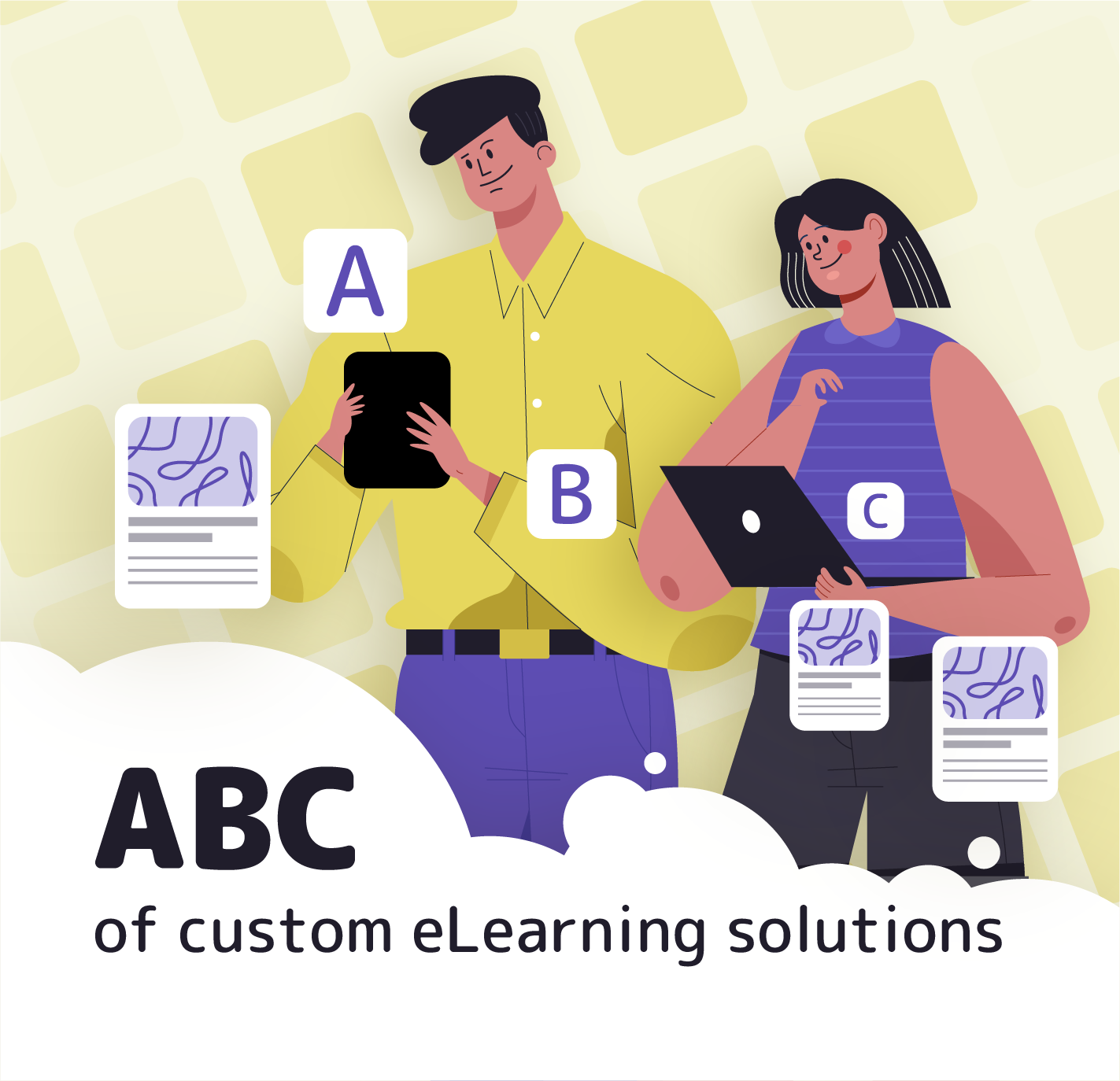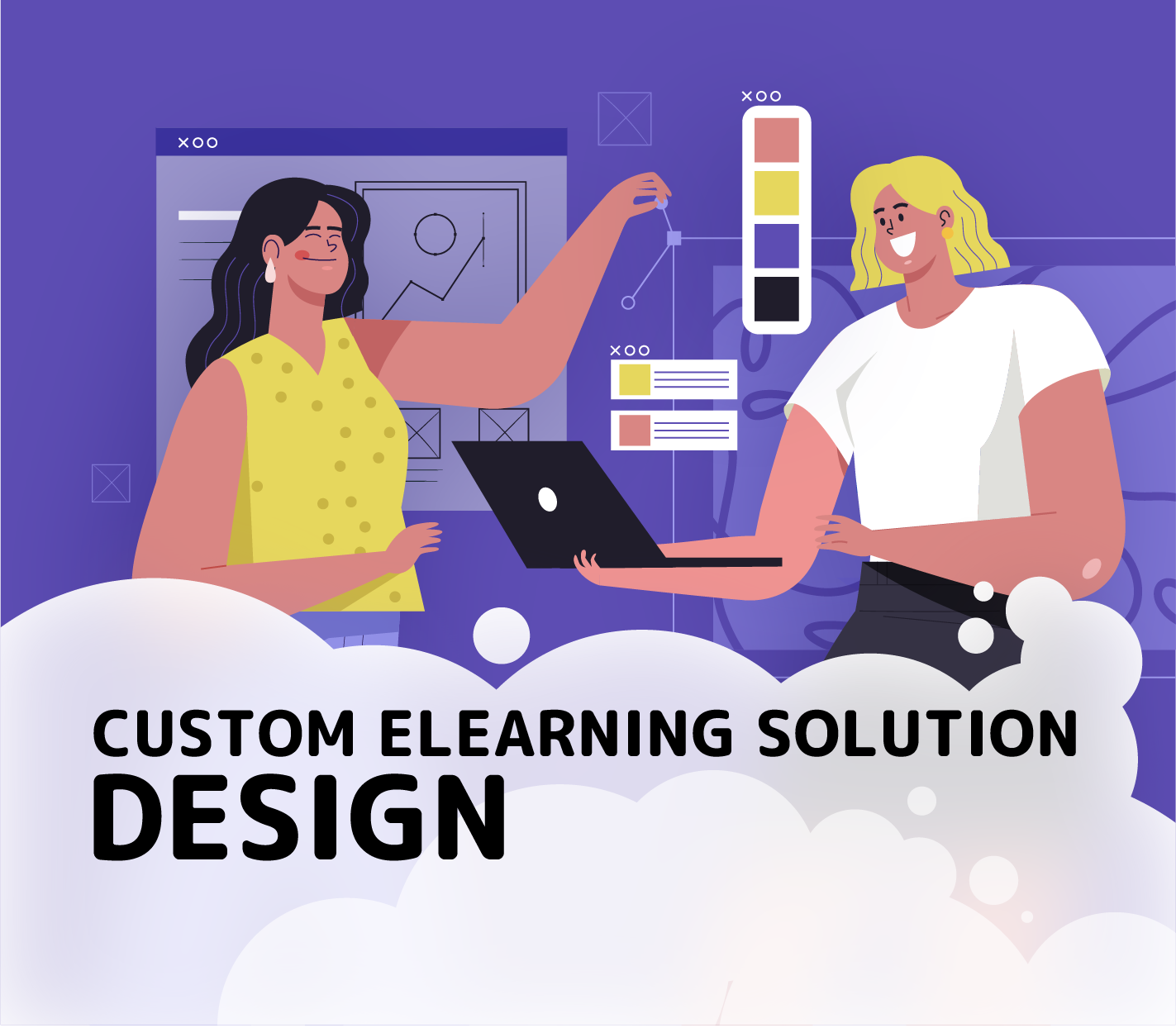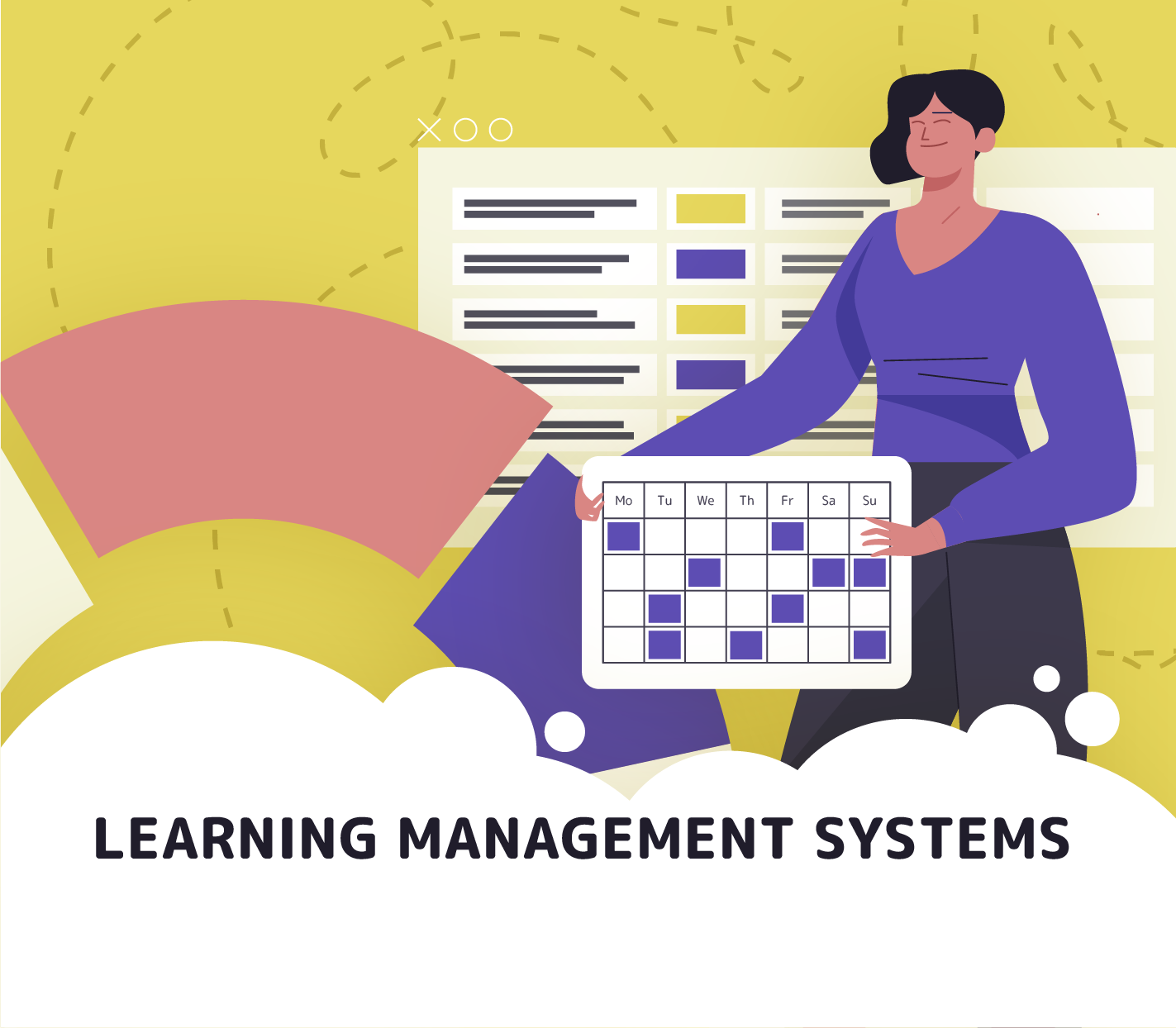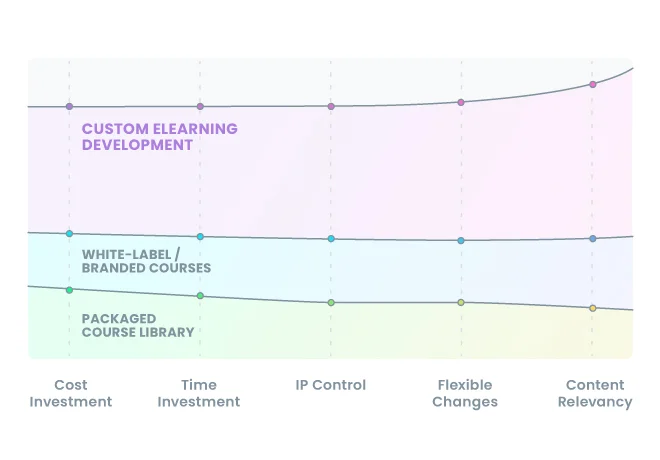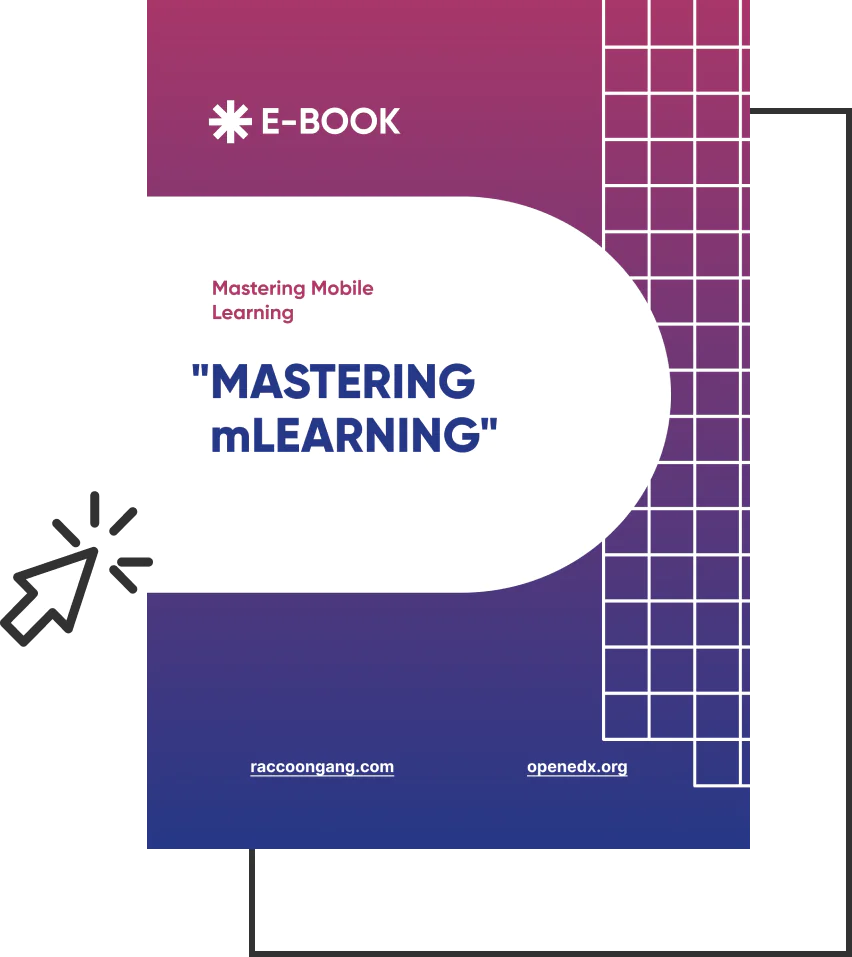For those companies, who are focused on getting the benefit of digital progress, we’ve collected an ABC of custom eLearning solutions terms. Introducing the basic both technical and conceptual terms of the field, this glossary will come in handy. Besides, when it comes to abbreviations, many of them may sound confusing. So even if you’re already an experienced eLearning customer, make sure to look through the list to clarify some of the already known eLearning terms.
A – Adult Learning Principles
To implement eLearning effectively, one needs to understand the most efficient way adults learn. Their training session must always contain a problem in the core, as they often have an intention to learn how to solve a problem. Addressing this principle will solve 50 percent of all issues on the way to creating the best eLearning material.
B – Blended learning
Blended learning is considered to be the best combination of two training environments – traditional classroom learning and advanced eLearning. By covering all the bases, educators can attract all types of learners – fast learners who prefer a structured environment that includes face-to-face communication with a trainer, and independent learners who get more excitement studying on their own with semi-autonomous training.
While the traditional classroom offers the opportunity for role play with immediate personal feedback, online learning offers personalized, self-paced learning with custom eLearning solutions that include interactive tools such as skill development, games, videos, tutorials, quizzes, and social media components which are all accessible from the student’s home page in the Learning Management System (LMS) and can be easily accessible from a smartphone or a tablet.
C – Cloud LMS
This type of learning management system helps to manage custom eLearning solutions, storing all the data in the cloud, so that there’s no need to self-host it. It is quicker, more cost-effective, and involves less in-house technical support to maintain and run.
D – Design of the eLearning course
The key aspect of a custom eLearning solution is its design, which is supposed not only to convey knowledge but also to help in applying the skills mastered during the learning process. So, knowing instructional design models and visual design principles will help one to manage a good design for a custom eLearning solution. Great narratives and relevant storylines usually better capture the learner’s attention.
E – Elearning platform
The eLearning platform is an integrated set of interactive online services that are provided by instructors combined with information, tools, and resources to support and improve the quality of education and management.
F – Formative Assessments
The formative assessment describes a wide range of formal and informal assessment procedures conducted by online educators during the learning process to modify their eLearning activities and to improve students’ performance. The formative assessment can be used after any learning milestone and gives online learners a chance to monitor their achievements and target areas that need more practice, and to identify their strengths and weaknesses and in the long run.
G – Gamification
Among the custom eLearning solutions, gamification can be found as one of the most effective in creating the right impact on a learner. The primary goal of gamification is to support and enhance educational delivery and management, by helping learners focus their attention on the content and make their learning experience engaging and interactive. Incorporated into other eLearning platforms, gamification uses game elements such as points, levels, captivating storylines, leaderboards, and digital badges – everything that helps learners escape from their mundane training routines and develop creative problem-solving skills.
H – HTML5
So here goes HTML5, a term, bringing the whole web-development chaos together and an umbrella term for the next generation of web apps, with better style (CSS), better markup (HTML), and better interactivity (JavaScript). It provides easy accessibility of the eLearning course, due to its capacity to transform custom eLearning solutions to mobile versions.
I – Integrations
A golden rule of creating custom eLearning solutions claims to check the interoperability of products, the extent to which software and hardware work together. In other words, your courseware and the LMS need to match and work properly to ensure a consistent learning process.
There are 4 main eLearning compatibility standards:
-
Installation and Initial Launch
-
SCORM Compliance (Sharable Content Object Reference Model)
-
Tin Can API
-
AICC Compliance.
It is vital to create a connected e-learning ecosystem by integrating custom e-learning solutions with collaboration apps, payment systems, CRM solutions, business intelligence tools, and social media, known as LMS integrations.
K – Kirkpatrick Model
One of the best-known ways to measure e-learning and learning initiatives is the Kirkpatrick Evaluating Model. The point is that Kirkpatrick identifies four different assessment methods. Developers of learning materials must put in extra work to find ways to capture additional levels of assessment for their programs, as this is how educational institutions can determine the real impact of their online learning programs.
L – Learning Management Systems (LMSs)
Learning Management Systems help to accumulate, measure, and report the information on the learners’ activity and show deeper insight into the behaviors, tendencies, and experiences for different purposes including identifying areas for improvement in the eLearning environment. The best LMSs provide built-in content management modules, balanced course scheduling and planning, online communication via chat rooms, built-in messaging systems, and social networking features, and more importantly, individual areas for learners and educators to structure learning content.
M – Microlearning
Microlearning is considered to be one of the most modern and popular custom eLearning solutions for educational institutions. Microlearning is an evolving paradigm aimed at meeting learners’ need for the content they need, when they need it, and in the right context. As a learning strategy or approach, microlearning provides short-term lessons (10 minutes or less), projects, or coursework that is designed to provide learners with ‘bits’ of information and targeted learning and support to achieve great results.
N – Navigation
While deciding How to Structure Your Online Course navigation plays an integral role and represents the structured path of the course, which learners will follow. Navigation is like a skeleton for a Custom eLearning solution, without which the course productivity will fail. Here again instructional design plays the key role and makes it simple, clear, and engaging.
O – Open Edx
Open EdX is an open-source platform that offers flexible online learning solutions. Institutions can host and deploy their courses on the Open edX platform. Educators can expand the platform to create learning tools that perfectly match their needs. Open Edx platform allows custom feature development, that creates the great UI and UX both for educators and learners, allowing them to easily dig into the course content, track the progress, and earn badges as indicators of current achievements. You may also address the preferred Open Edx service provider, that conducts all the above-mentioned services.
Want to know more about Open edX and why we believe it’s a great LMS technology? Check out our blog posts on the topic:
- Open edX: What Is It And Why 19 Million People Use It?
- Why You Should Choose the Open edX® Platform?
Q – Quality assurance
Since eLearning development requires the collaborative effort of different people with different skill sets, there are many chances that the quality of the course can deteriorate, leaving room for errors, and if they are not found on the spot, these errors will be conveyed down the pipeline. To avoid errors in the early stages we recommend digging into How to Create an Online Course Platform, thus you’ll ensure that errors are identified early and eliminated immediately before moving on to the next step.
R – ROI of E-learning
Successful eLearning ROI displays more than just an investment. In today’s modern fast-paced world, all organizations have three important goals: fast product launch, satisfactory customer service, and increased learners’ productivity accompanied by a better learning environment. With organizations scattered around the world, e-learning has evolved into an elite learning environment that effectively overcomes classroom learning constraints and expands training coverage while optimizing cost, time, and, more importantly, the learning curve.
S – Social learning
Social Learning is the perfect eLearning solution for training remote learners. This is because the learner is not just passively receiving instructions, but actively learning from experience. It is easier for people to recall experiences in everyday life rather than what comes along their way in the form of formal instructions. Courses that put social learning at the core of their program show better results in learner engagement, completion, and satisfaction. As such, social learning can be defined as a change in understanding that transcends the individual and becomes part of broader social units or communities of practice through social interactions between participants on social networks.
T – Tools (Authoring)
An eLearning authoring tool is software that allows you to create digital educational content, adding custom eLearning solutions, converting it into the necessary format to distribute it among learners using a learning management system.
X – xAPI (Experience Application Programming Interface)
The Experience API allows you to record, track, personalize, and improve learning activities hence it revolutionizes the impact of learning programs and offers a detailed picture of how people participate in blended learning. It can also be used to establish a direct link between learners’ experiences and their performance at universities.
Z – ZPD (Zone of Proximal Development)
The zone of proximal development (ZPD) is the range of skills that an individual can execute under the supervision of an expert but cannot yet perform independently.
This learning theory, developed by psychologist Lev Vygotsky, can be witnessed in a classroom environment or anywhere else where an individual has the potential to gain new abilities. Vygotsky is well known for his sociocultural theory, which proposes that cognitive development is a function of social interactions and that these interactions vary from culture to culture.
Some Additional Points
These comparisons shed light on the trade-offs between bespoke eLearning solutions and various off-the-shelf or subscription-based models, emphasizing the importance of aligning the chosen approach with organizational goals and learning outcomes.
A Tailored Experience vs. Off-the-Rack
| Custom eLearning Solutions | |
| Pros: | Cons: |
| Personalization: Tailored content meets specific learning needs, enhancing engagement. | Cost and Time: Development may be more time-consuming and expensive compared to off-the-shelf solutions. |
| Scalability: Adaptable to various learning styles and organizational requirements. | Maintenance Challenges: Regular updates and maintenance require dedicated resources and time commitment. |
| Brand Alignment: Reflects the organization’s branding and culture, fostering a cohesive learning environment. | Complexity: Custom solutions might involve complexities in implementation and integration. |
| Off-the-Rack Solutions | |
| Pros: | Cons: |
| Cost and Time Efficiency: Quick deployment and lower initial costs compared to custom solutions. | Lack of Personalization: Generic content might not address specific organizational needs or nuances. |
| Ease of Implementation: Ready-made content requires minimal setup and configuration. | Limited Scalability: Might not adapt well to unique learning styles or complex organizational structures. |
| Updates and Support: Regularly updated by providers, often with built-in support. | Brand Misalignment: Might lack customization to reflect the organization’s branding and ethos. |
Custom eLearning Development vs. Other Types of Online Course Subscription Methods
Custom eLearning Development:
Advantages:
- Tailored Solutions: Specifically designed to meet organizational needs and learning objectives.
- Flexibility and Adaptability: Can evolve and align with organizational changes and learner requirements.
- Greater Control: Allows control over content, design, and features.
Comparisons:
- Subscription Models: Offer pre-existing course libraries with a fixed fee, providing varied content but less tailored.
- LMS Platforms: Provide tools for content creation but may lack the depth of customization seen in bespoke development.
- Open Source Solutions: Offer flexibility but often require technical expertise for implementation and maintenance.
Other Types of Online Course Subscription Methods:
Subscription Models:
- Advantages: Access to a wide array of content for a fixed fee, convenient for diverse learning needs.
- Disadvantages: Lack of customization to specific organizational needs, potential for content redundancy.
LMS Platforms:
- Advantages: Provide tools for content creation and management, fostering a balance between customization and ease of use.
- Disadvantages: Limited in-depth customization compared to custom development, may not fully align with unique organizational needs.
Open Source Solutions:
- Advantages: High flexibility and potential for customization, ideal for organizations with specific technical expertise.
- Disadvantages: Require technical proficiency for setup and maintenance, potential for higher long-term costs.
Before and while developing the perfect eLearning solution for the needs of the company, most customers look through a bunch of materials concerning this process. This ABC was compiled to ease your pains and fill in the gaps in your eLearning knowledge background to make the process of creating your custom eLearning solution less challenging.
- A – Adult Learning Principles
- B – Blended learning
- C – Cloud LMS
- D – Design of the eLearning course
- E - Elearning platform
- F – Formative Assessments
- G – Gamification
- H – HTML5
- I - Integrations
- K – Kirkpatrick Model
- L – Learning Management Systems (LMSs)
- M - Microlearning
- N – Navigation
- O - Open Edx
- Q - Quality assurance
- R – ROI of E-learning
- S - Social learning
- T – Tools (Authoring)
- X – xAPI (Experience Application Programming Interface)
- Z - ZPD (Zone of Proximal Development)
- Some Additional Points
- A Tailored Experience vs. Off-the-Rack
- Custom eLearning Development vs. Other Types of Online Course Subscription Methods

